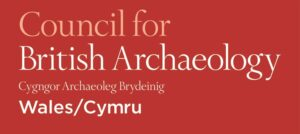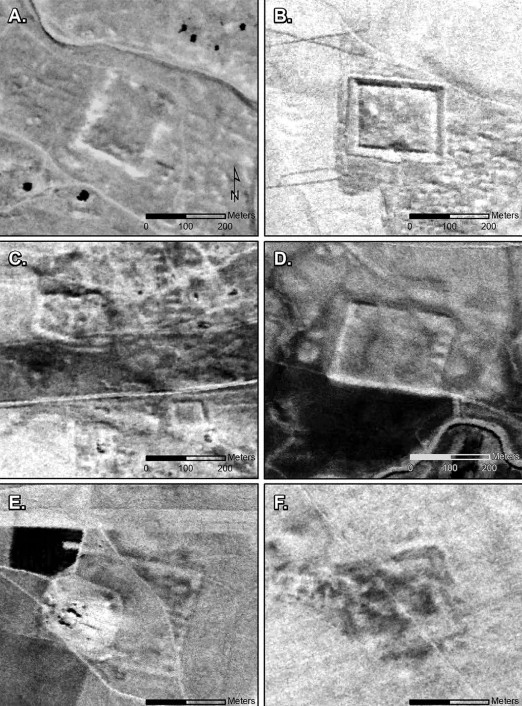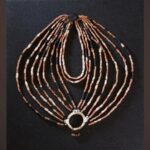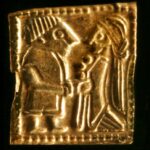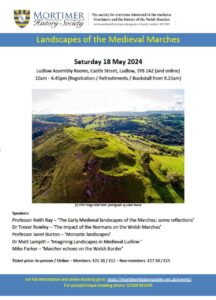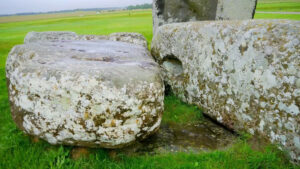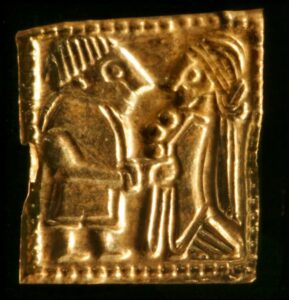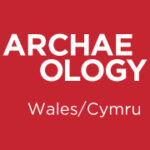Cold war satellite images reveal hundreds of unknown Roman forts
Date: 26 October 2023
Source: The Guardian
Summary: Declassified cold-war spy satellite images have unveiled 396 previously unknown Roman forts in Syria and Iraq, revolutionizing our understanding of the Roman empire. Contrary to the belief that these forts formed a defensive line against incursions, new findings suggest they were part of a vibrant trade network. This re-evaluation, published in the Antiquity journal, challenges the long-held view that the Roman frontier was a zone of constant conflict. Instead, it appears to have been a dynamic area facilitating trade and communication. The discovery, made from aerial photographs taken in the 1960s and 70s, indicates that Roman borders were more fluid than previously thought, emphasizing trade over rigid exclusion.
Read more…
Also: Read more…
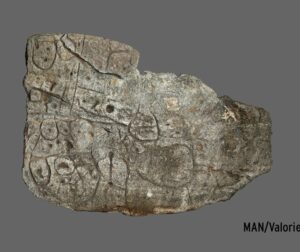 4,000-year-old rock with mysterious markings becomes a “treasure map” for archaeologists
4,000-year-old rock with mysterious markings becomes a “treasure map” for archaeologists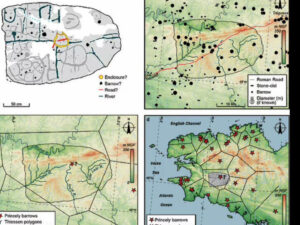
Date: October 17, 2023
Source: CBS News
Summary:
A 4,000-year-old rock, known as the Saint-Belec slab, discovered at a tomb site, is now considered Europe’s oldest known map. Researchers, who began decoding its mysteries in 2021, view it as a “treasure map” to unearth ancient sites in northwestern France. The slab, initially found in 1900 but largely unstudied, depicts an area of about 30 by 21 kilometers. Its engravings, believed to represent rivers, mountains, and possibly burial mounds or dwellings, offer an 80% match with current maps of the region. The ongoing research, which could take 15 years, aims to fully interpret the geometric symbols and their corresponding legends. Recent excavations at the slab’s discovery site have uncovered additional fragments, shedding light on the Bronze Age burial practices and potential shifts in power dynamics of the era.
Read more… CBS News
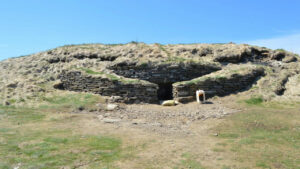 A nutrient-rich food that once largely disappeared from Western diets was a staple of early Europeans, study finds
A nutrient-rich food that once largely disappeared from Western diets was a staple of early Europeans, study finds
Date: October 17, 2023
Source: CNN
Summary:
Seaweed and aquatic plants, now rare in Western diets, were essential foods for ancient Europeans, as revealed by an analysis of molecules in fossilized dental plaque. This study, published in Nature Communications, overturns previous assumptions that seaweed presence in archaeological sites was for non-consumptive purposes. Researchers from the University of Glasgow and the University of York examined teeth from 74 early humans across Europe, dating from over 8,000 to 2,000 years ago. Chemical markers in dental calculus indicated that 26 out of 37 samples contained traces of seaweed or aquatic plants. This discovery suggests that ancient populations understood the nutritional benefits of these plants, maintaining a dietary link with the sea. Notably, seaweed consumption wasn’t limited to coastal communities; inland sites like La Corona in Spain also showed evidence of seaweed in the diet. The study highlights the potential for incorporating more seaweeds and freshwater plants in modern diets, considering their recognized health benefits.
Read more… CNN
Also… The Comet
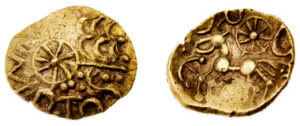 Amateur detectorist’s coin find reveals unknown British king Esunertos
Amateur detectorist’s coin find reveals unknown British king Esunertos
Date: 19 October 2023
Source: The Telegraph
Summary:
An amateur detectorist’s discovery in a Hampshire field has led to the addition of a new name to the historical record of British monarchs: King Esunertos. The coin, found by construction worker Lewis Fudge, bears the name of this previously unknown king. This significant find has provided historians and archaeologists with a new figure to study and understand in the context of Britain’s past. The coin’s discovery and the revelation of King Esunertos’ existence demonstrate the ongoing potential for amateur enthusiasts to contribute to historical knowledge and the understanding of ancient civilizations.
Read more… The Telegraph
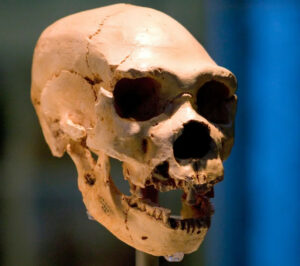 Why do some groups of people today have more Neanderthal DNA than others? A new study offers answers
Why do some groups of people today have more Neanderthal DNA than others? A new study offers answers
Date: October 18, 2023
Source: CNN
Summary:
A new study published in Science Advances has deepened the understanding of Neanderthal DNA in human populations in Europe and Asia. Most humans today have a small percentage of Neanderthal DNA due to prehistoric interactions between our ancestors and Neanderthals. However, this DNA is more abundant in East Asian populations, a fact that puzzled scientists since Neanderthal remains are primarily found in Europe and the Middle East. Researchers from the University of Geneva analyzed ancient genomes and discovered that the distribution of Neanderthal DNA has changed over time. Initially, Stone Age Homo sapiens in Europe had a higher proportion of Neanderthal DNA than those in Asia. The current pattern, with a higher percentage in Asian populations, likely developed during the Neolithic transition when farming began. The mixing of Anatolian farmers with European hunter-gatherers resulted in a dilution of Neanderthal DNA in European genomes. The study highlights the evolving nature of genetic inheritance and its potential impact on modern human health.
Read more… CNN
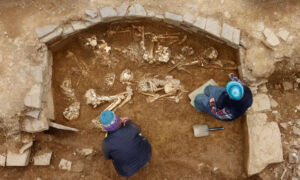 ‘A Neolithic feat of engineering’: Orkney dig reveals ruins of huge tomb
‘A Neolithic feat of engineering’: Orkney dig reveals ruins of huge tomb
Date: 21 Oct 2023
Source: The Guardian
Summary:
Archaeologists have unearthed the ruins of a 5,000-year-old tomb in Orkney, showcasing the pinnacle of Neolithic engineering in northern Britain. The tomb, over 15 meters in diameter, contains a stone structure with a long passage leading to six cells or side rooms. Inside, fourteen articulated skeletons of men, women, and children were found, including two positioned as if embracing. The excavation, led by Dr. Hugo Anderson-Whymark and Prof. Vicki Cummings, revealed the tomb’s circular shape with a rectangular chamber and curved cells. The corbelled construction of the tomb, involving stones built up gradually to create narrowing chambers, is considered an engineering feat. The site had been overlooked until now, having been flattened and largely destroyed in the 18th or 19th centuries. The recent excavation unearthed evidence of a substantial cairn and a small motif carved on one of the stones. This discovery opens up potential for DNA analysis and research to understand the relationships between the individuals buried and their connection to other Orkney tombs.
Read more… The Guardian
Also… STV News
Skeleton found at Hadrian’s Wall could reveal more about life in Roman Britain
Date: 26 October 2023
Source: ITV News
Summary: Archaeologists have unearthed a human skeleton at Hadrian’s Wall, offering a potential treasure trove of information about life in late Roman Britain. The discovery, made during an excavation at Milecastle 46 in Northumberland, also included a rare dual balance beam and a well. The skeleton, found between the east wall of the milecastle and Hadrian’s Wall, appears to have been carefully buried in a shroud. This rare find at Hadrian’s Wall is significant, as burials at the site are uncommon. Analysis of the teeth will provide insights into the individual’s diet, lifestyle, and origin. The excavation is part of a five-year research project funded by The National Lottery Heritage Fund. Further research will continue over the winter, with excavations resuming in April 2024.
Read more…
